It may be a concept most of us have encountered before but what exactly is Gambler’s Fallacy?
Forget the Wikipedia definition or explanations found on numerous guides floating through the Internet waters. This comprehensive piece below is everything you need to know about this fascinating phenomenon.
Gambler or not, you will be enlightened by the time you reach the end of this article – and with not a single mathematics formula in sight!
What is Gambler’s Fallacy?

It’s a trick. To put it simply and bluntly. The very word Fallacy originally derives from the Latin noun ‘Fallacia’ – means a trick or fraud.
Gambler’s Fallacy is perceived as a cognitive trick your brain plays in order to deal with a puzzling situation; specifically when faced with a sequence of random events it is unable to find relatable patterns within. Gambler’s Fallacy is an unwilling trick, stemming out from the lack of better solutions, designed by your brain as a way to interpret overwhelming information.
Scholars call it cognitive bias (Kahneman, 2011; Tversky & Kahneman, 1974), a deviation from rationality in judgment. Such a description, however, does not even begin to describe its diversity, which starts with the multitude of different names used to explain this phenomenon.
If, by any chance, Gambler’s Fallacy does not ring any bells, how about the Maturity of Chances or better yet the Monte Carlo Fallacy?
Maturity of Chances
 The law of the maturity of chances is a technical name given to the idea that the more bets you make on a losing run, the more you are due to win in the end. Whatever the probability of an event might be, the principle behind the maturity of chances is simple – the likelihood of a win increases as the losing run goes on.
The law of the maturity of chances is a technical name given to the idea that the more bets you make on a losing run, the more you are due to win in the end. Whatever the probability of an event might be, the principle behind the maturity of chances is simple – the likelihood of a win increases as the losing run goes on.
The reasoning behind such an assumption is based on the mathematical principle best explained through a coin toss and the law of large numbers (LLN). With outcomes of the tosses being statistically independent, the probability of getting heads/or tails on a single toss is one in two, or 50%. According to LLN, the average result of a large number of coin tosses becomes closer to the average as more and more tosses are made.
The law of large numbers only applies to a large number of attempts – as the name itself suggests – and should not be used to find reason and explanation behind the individual attempts, tosses, or roulette spins for that matter.
Monte Carlo Fallacy

On the 18th August 1918 the most famous occurrence of Gambler’s Fallacy took place in a game of roulette at the famed Monte Carlo Casino.
With the remarkable probability of around 1 in 66.6 million, the roulette ball ended up falling on black for a record 26 times in a row, which was an unprecedented – and largely inexplicable – event in the world of gambling to that date.
The effect of this particular example was so overwhelming that it later on became the main association to the actual fallacy phenomenon.
Somewhere around the 15th time the ball hit black, the players began to panic.
Bets were being made on red as gamblers ended up losing millions of francs claiming and firmly believing that the streak was due to end, while their minds were falsely led by the law of large numbers and maturity of odds.
The Hot Hand Fallacy
 The concept on the opposite side of the spectrum to the Monte Carlo Fallacy is known as the Hot Hand Fallacy.
The concept on the opposite side of the spectrum to the Monte Carlo Fallacy is known as the Hot Hand Fallacy.
Imagine a single player in 1918 who would decide to bet only on black after the ball landed on it three times in a row. The improbable scenario would then lead them to win all 15 times in the initial sequence. Would they be bold enough to continue to bet on the black after the ball hit this colour after a 15-strong run? Probably.
Contrary to that particular gambler’s perplexed fellow players, this one would have enjoyed what is called the ‘hot hand phenomenon’. It presumes that future attempts could produce results based on a previously positive streak.
This phenomenon could falsely lead players to believe their previous attempts had been related to their good fortune or Lady Luck smiling on them on that occasion, which makes the Hot Hand occurrence merely a psychological attitude.
The Hot Hand Phenomenon originated from basketball. Amos Tversky, Thomas Gilovich and Robert Vallone suggested in 1985 that players’ chances of making a successful shot are affected by the outcome of the previous shot. The shot, they claim, is likely to be successful if the previous shot went in.
Statistical Independence

It was Edmond de Goncourt who said that “statistics is the main of all inaccurate studies”. The famous quote from the French writer and literary critic might be the perfect description of the human brain’s failure to understand statistical independence, a symptom underlying the Gambler’s Fallacy.
Statistical Independence argues that individual members of any sequence are statistically independent of each other and will not be in any way connected.
It simply states that you will be unable to predict the next outcome of the sequence based upon the knowledge and the experience provided by the previous members of the sequence.
Example: Predict the following sequences of numbers.
- 0, 2, 4, 6, 8, 10…
- 3, 15, 57, 21, 1, 43…
A person with basic knowledge of math would have no problems predicting the next number in the first sequence which illustrates even numbers. However, no knowledge of math would help you predict the next number in the second sequence.
Why? Because it is completely random and imagined as a sequence of page numbers you get while flicking through a book with your eyes closed. Numbers from the second sequence are statistically independent and therefore cannot be predicted which is what gamblers failed to acknowledge in Monte Carlo in 1918.
Dissecting the Monte Carlo Fallacy
 Gamblers, punters and players in general largely rely on statistics (and maths) to win.
Gamblers, punters and players in general largely rely on statistics (and maths) to win.
What they usually fail to remember is the fact that casino games are nowadays powered by sophisticated random number generators (RNG) making it – in a game of online roulette for example – almost impossible to predict.
Assuming that the Monte Carlo roulette wheel was fair, the probability of the ball landing on black was – and the law of large number (LLN) implies so – a little less than evens, one in two or ½ with any turn of the wheel. That, in other words would be the expected value (EV) for every bet in which the outcome was equally likely.
The colours coming up on the wheel are statistically independent of one another and will not result in any pattern or outcome your mind may believe. This independence is what the human brain fails to process in terms of probability, which remains the same regardless of how many times the ball would fall on black.
The roulette wheel along with the two colours and the ball are all statistically independent elements without a memory of any sort, hence preventing the players producing any kind of a predictable sequence.
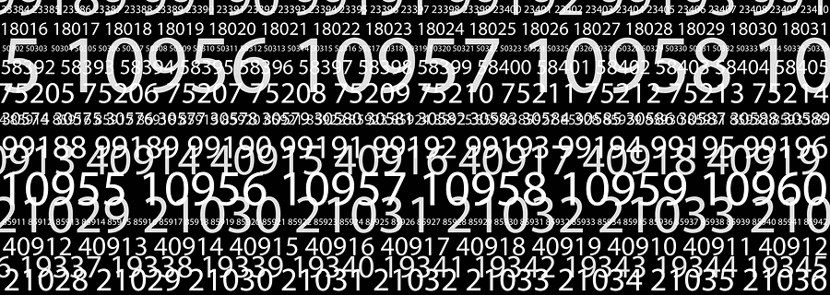
Unlike machine-powered games such as roulette, sports such as football do not strictly follow the same pattern of statistical independence.
Sports bettors use statistics to analyse the current form of a team, head to head records, home and away records in an attempt to recognise a pattern that will help them pick a winning team. Unlike the black and red example in roulette, the situation with football is different as the outcome cannot be observed in independent terms.
Unlike a coin, a dice, ball, or black and red, which do not have memory of their own, football participants – people – cannot be observed as completely independent elements. The probability of a coin toss will always be 50% but how do we determine the exact probability in a football game?
The players have memory, feelings and emotions, and are susceptible to variations in behaviour which can affect the outcome of the game regardless of the statistics. The numbers would indicate that any given football match is an independent event in a series (a season) but such an assumption is far from the truth.
Example: Let’s imagine a situation. It’s the 35th game-round of the Premier League and Liverpool have already secured the title with a five-point advantage over Manchester City. They have an impressive home record and are yet to lose a game at Anfield in the campaign. Without a win in their last seven matches, relegation-threatened Newcastle travel to Liverpool and need to win in order to secure their Premier League title.
 The statistical analysis of the game is as follows – we have undefeated league leaders playing host to a team suffering from a dreadful run and sitting at the bottom part of the table. If this is everything you knew about the game – without any background info, what would be the best and most obvious bet to make here? Surely a home win? Well, no.
The statistical analysis of the game is as follows – we have undefeated league leaders playing host to a team suffering from a dreadful run and sitting at the bottom part of the table. If this is everything you knew about the game – without any background info, what would be the best and most obvious bet to make here? Surely a home win? Well, no.
The exact probability of the occurrence in this particular sporting event will be determined by a number of factors. Liverpool – already champions – will be in celebratory mood and will have no need to go full strength into the game. Their carefree approach – however involuntary as they are all professionals – could affect the result against the under-pressure side which has everything to lose. Motivation and determination coming from the side of Newcastle could play an important part in the final outcome of the match.
This particular analysis and inspection of the elements, leading to a conclusion that is in contrast to the stats, is called ‘the wisdom of the crowd’. It’s a theory claiming that the general public is capable of shaping up odds which could be corrected by a human factor.
To draw a line beneath it all, sports events are human and possess a memory which makes gambler’s fallacy a differently applied phenomenon. Knowing that streaks of results can affect and be affected by the same psychology that is behind them.
Psychology behind the Gambler’s Fallacy
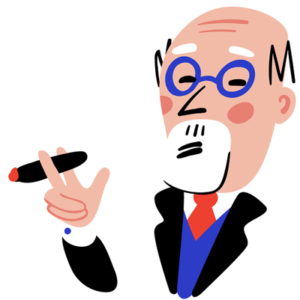 It might have been identified as a gambler’s phenomenon due to the global popularity of the Monte Carlo occurrence but fallacy is a psychological sensation which affects our everyday life in ways we fail to acknowledge.
It might have been identified as a gambler’s phenomenon due to the global popularity of the Monte Carlo occurrence but fallacy is a psychological sensation which affects our everyday life in ways we fail to acknowledge.
In simplest of terms and without using the psych vocabulary, fallacy as a cognitive bias occurs when our mind creates realities of its own. This is usually done based on knowledge and experiences – often limited ones – in combination with our memory.
To further simplify things, cognitive bias is best described through cognitive illusions. No definition or explanation can portray a phenomenon of any sort the way an image could. Therefore, a couple of examples of ‘Unconscious Inferences’ through the form of optical illusions, could do the trick here.
- Hering Illusion
- Ponzo Illusion
- Checker Shadow Illusion
Not to be mistaken with pathological visual illusions which are understood as a form of focal dysfunction, the optical illusions are cognitively derived and appear to hold many similarities with the mechanics behind the Gambler’s Fallacy.
Hering Illusion
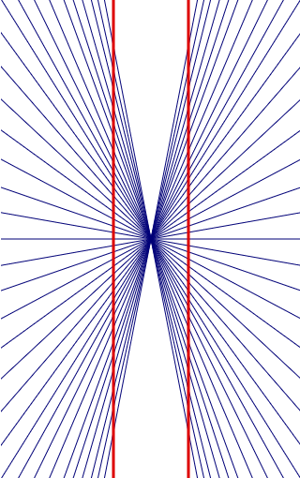
Hering Illusion will lead you to believe that two red lines in the picture below here are slightly bent when in fact they are parallel. And straight, it goes without saying. Created and introduced in 1861 by the German physiologist Ewald Hering, this illusion is described through a 3D bias projecting through a 2D image.
Others have later explained the illusion through the human tendency to visually predict the near future through motion. Such an assumption was claimed by a researcher from the Rensselaer Polytechnic Institute, Mark Changizi.In “The Vision Revolution: How the Latest Research Overturns Everything We Thought We Knew About Human Vision”, Changizi raises fundamental questions of who do human see in colour or why are eyes faced forward.
Changizi argues that colour vision allows us to have a better insight into the mental states of other people – by recognising emotion in other people. Just think of blushing with embarrassment for instance.
To put this illusion in a gambling perspective, it could be argued that the human ‘’future-predicting” instinct could lead us believe that the ball is bound to fall on red following a series of black results.
Ponzo Illusion

This type of illusion will have you believe the two yellow lines in this image appear to be different in size when they are actually the same.Mario Ponzo, an Italian phychologist created this illusion in 1911 to argue the idea that our brain measures the size of an object in relation to its background.
Similarly, our brain would measure the length of a black (or red) run in roulette and falsely lead us to believe that the length of one stretch in relation to another could affect the result of the next spin.
Checker Shadow Illusion
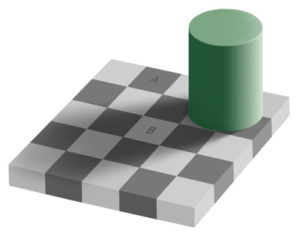
Have a look at the board here and see what your brain has to say about the colour of tiles A and B.
Here is a tip – it’s one and the same colour. Introduced in 1995 by a visual science professor from MIT, Edward Adelson, this illusion will automatically lead you to believe that anything standing in a shadow needs to be darker than it really is. Well, it doesn’t.
This particular illusion is perhaps the most difficult to place in the context of gambling but could offer proof to a claim arguing that our vision, perception and decision making will often get blurred by irrelevant information.
For example, when assessing two roulette runs – five successive red results compared to seven consecutive black ones – which one would be more likely to end in the next spin? Resulting from the Checker Shadow Illusion, a perceptive shadow will most likely have the general consensus gravitating towards the black run.
Teach Yourself To Avoid Psychological Bias
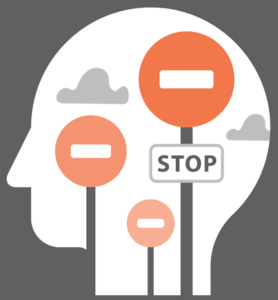 How do we teach our brains to avoid falling into a trap of the cognitive bias?
How do we teach our brains to avoid falling into a trap of the cognitive bias?
We could start by recognising the various types of bias. In case anyone wondered, psychologists claim there are 12 cognitive biases science has identified and studied thus far. And – YES – Gambler’s Fallacy is one of them.
Arranged in no particular order under the names they are usually found in the literature, all of these are listed below:
- Observation Selection Bias
- Ingroup Bias
- Post-Purchase Bias
- Negativity Bias
- Confirmation Bias
- Self-Serving Bias
- Status-Quo Bias
- Anchoring Effect
- Current Moment Bias
- Projection Bias
- Bandwagon Bias
- Gambler’s Fallacy
From a gambler, sports bettor or any other type of player’s point of view, all 12 types of biases can be incorporated into real-life gaming examples:
Observation Selection Bias
Let’s say you decided to treat yourself to a new jacket. You have identified the brand and just when you were getting ready to go to the store, you notice plenty of people wearing the same brand and style you wanted to buy.
As you dwell on this further your brain will also begin to pick up more of the same colour and style you initially desired. This phenomenon is not explained by frequency of occurrence but our filtered selection.
Ingroup Bias
Found in closely-tied groups such as religions, gangs or clubs, this particular bias will have you place complete faith inside the group without justified reason.
Easily transferred across the group members, beliefs and convictions will become your own even if they are not that close to being true.
Post-Purchase Bias
Also called the Buyer’s Stockholm Syndrome, this particular bias will see you defend a badly-made decision – usually when trying to persuade others that something you just bought is not so bad after all.
What your brain is trying to do here is to rationalise and convince you that you made the right choice (even though you know deep down that you made a wrong decision).
Negativity Bias
it’s in our nature – as humans – to get stuck on the bad and less on the good around us.Good news gets disregarded more easily and negative notions have a greater effect on our state of mind.
Confirmation Bias
The most comforting type of them all, this particular bias will lead you to interpret things the way it fits your own beliefs.
Confirmation bias comes as a validation of our own attitudes, strengthens them and our perception about them as being true beyond doubt.
Climate change deniers are often cited as having confirmation bias, focusing down on a limited range of evidence that supports no climate change, while ignoring a multitude of evidence showing its existence.
Self-Serving Bias
Closely related to the previous form, this type of bias is guided by humans’ need to maintain their self-esteem.
This bias leads us to boost our own image in an overly favourable manner without any actual objective reasoning.
Status Quo Bias
The biggest challenge in life, as mentioned before, is to get out of your comfort zone. That’s exactly what this type of bias is all about.
If there is a way to keep maintaining the status quo and continue to do things the way we find fit, it often does not even matter much if just a slight change would bring measurable improvement.
Anchoring Effect
Anchoring is a term used for people who like to hang on things that they are familiar with, and have a tendency to get stuck too heavily on one trait or a piece of information, without analysing the other possibilities.
This effect is closely related to prices and is used to influence a customer’s decision. To our mind, there is a great difference between a £100 price tag and £99.99 one. Nine is the biggest anchor here.
Current Moment Bias
This occurs when we let short-term decisions take control of our long-term thinking and decision making.
It’s all about getting instant gratification compared to future benefits. That is why people have so much trouble quitting smoking or starting eating healthy.
Projection Bias
Relies on people’s falsely conceived assumption that other people will automatically – or to a greater extent – agree with their own beliefs and that such opinions will remain unchanged in time.
What one person finds important will not by default be as important to other people.
Bandwagon Bias
Closely related to the Projection Bias, this type can be described through peer thinking. It’s based on the human need to belong to a group of like-minded people.
It is another way to remain within the boundaries of your own comfort zone, sharing with others who just make you feel better about yourself and your own beliefs. Even if they are false or harmful.
Gambler’s Fallacy
Based on all that’s been written above, Gambler’s Fallacy can be summed up as human brain’s propensity towards finding patterns where they do not exist.
Harnessing Randomness
 A great strategy to accept that Gambler’s Fallacy can influence your judgment when gambling – even for sports betting – is to learn how to harness the power of randomness.
A great strategy to accept that Gambler’s Fallacy can influence your judgment when gambling – even for sports betting – is to learn how to harness the power of randomness.
It can be done in a number of ways. The most common way is to rely on your gut and make an educated guess using a rule of thumb, making a guesstimate or simply using common sense. This, in a word, is called heuristic; a process that allows you to learn for yourself.
People through history have relied on heuristic methods, most often without even realising they are doing so. It is a method of solving a problem by taking a step back to observe the situation from a neutral standpoint and is arguably the most effective approach to not only deal with gambler’s fallacy but with all 12 types of cognitive biases.

Psychologists Cristopher Roney and Lana Trick have dealt with harnessing randomness in a study, going on to confirm that teaching people about randomness of events can lead to them becoming less affected by them.
A less scientific approach to gaining immunity to gambler’s fallacy is to learn from your mistakes, becoming more mature.
There is a belief that gambler’s fallacy is one of the easiest cognitive biases to overcome. Efraim Fiscbein and Ditza Schnarch from Tel Aviv University have performed a research where basic misconceptions were observed through the prism of evolution, age and time. The results are satisfactory – for a regular gambling bloke at least – as gambler’s fallacy is apparently possible to outgrow.
